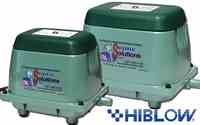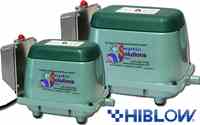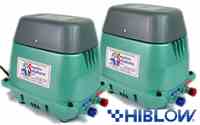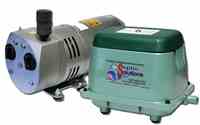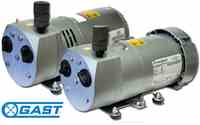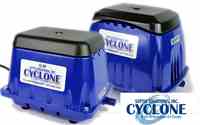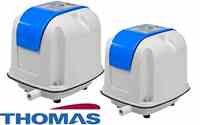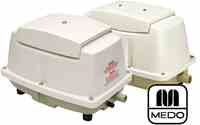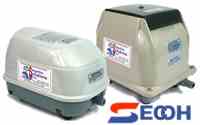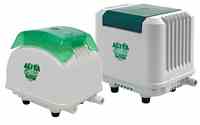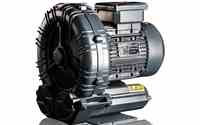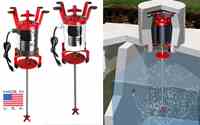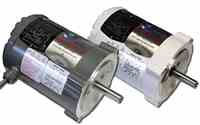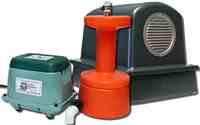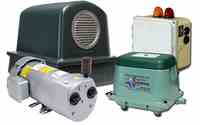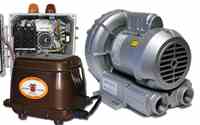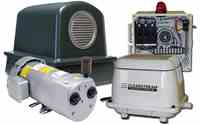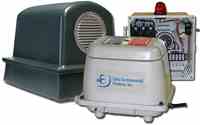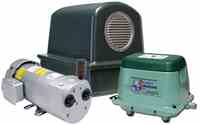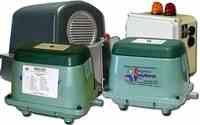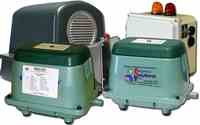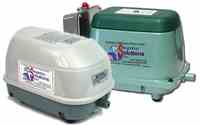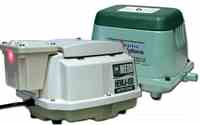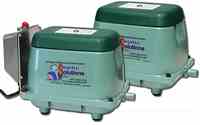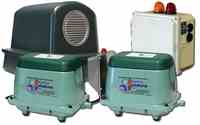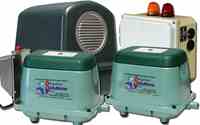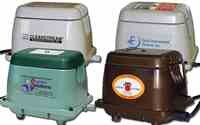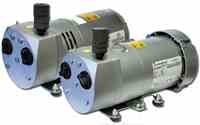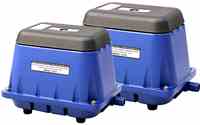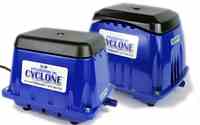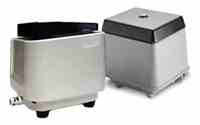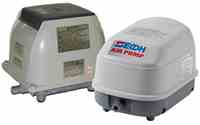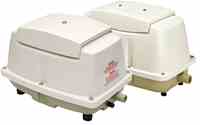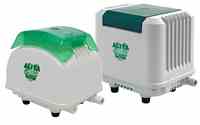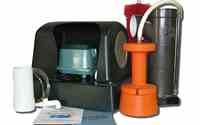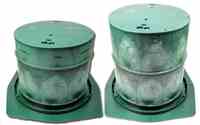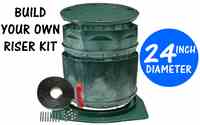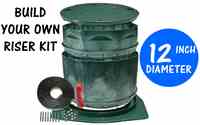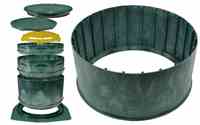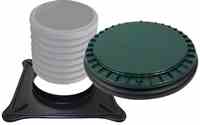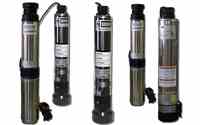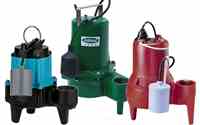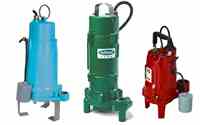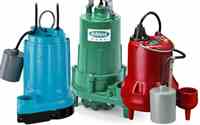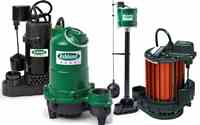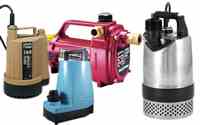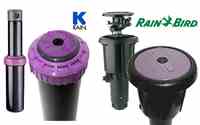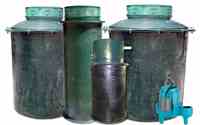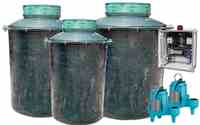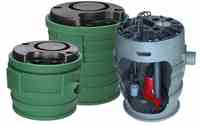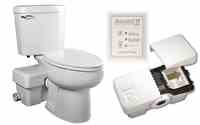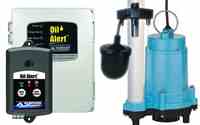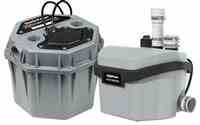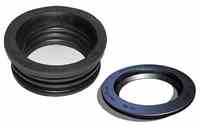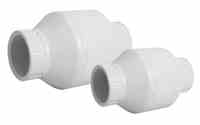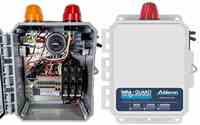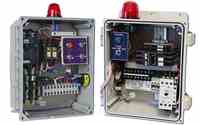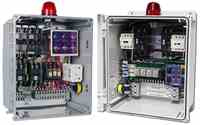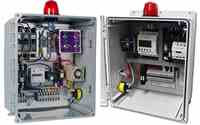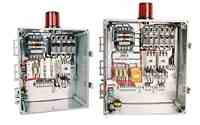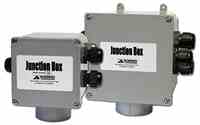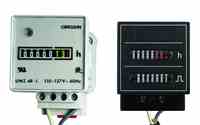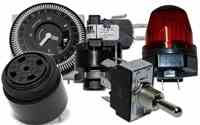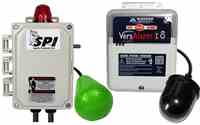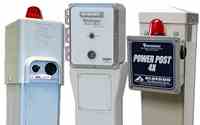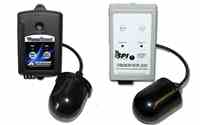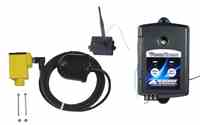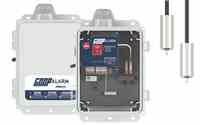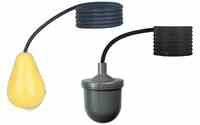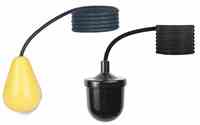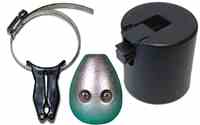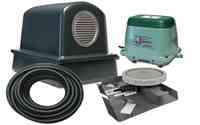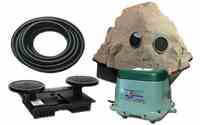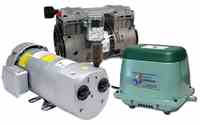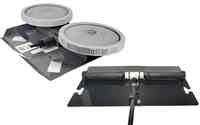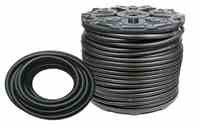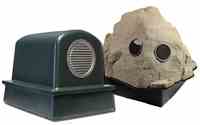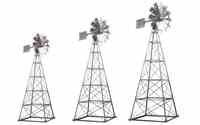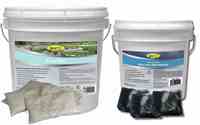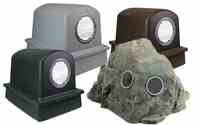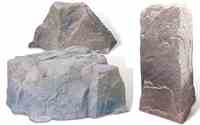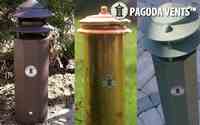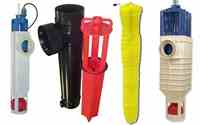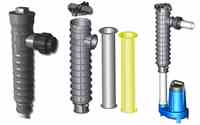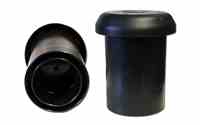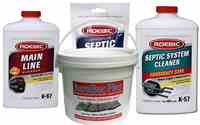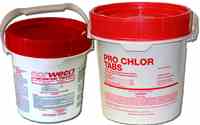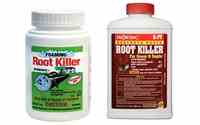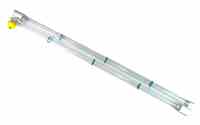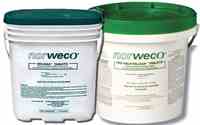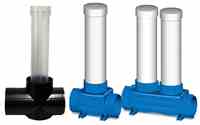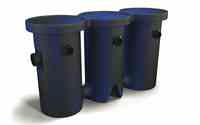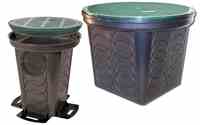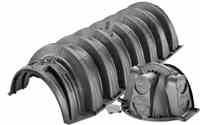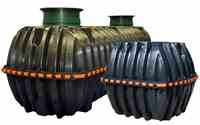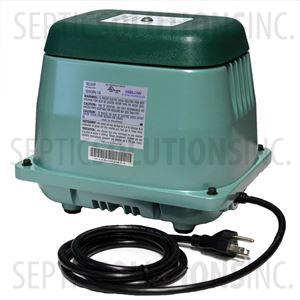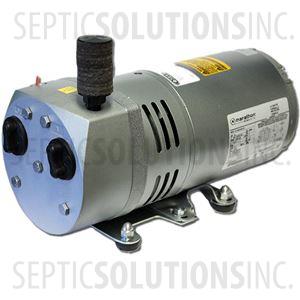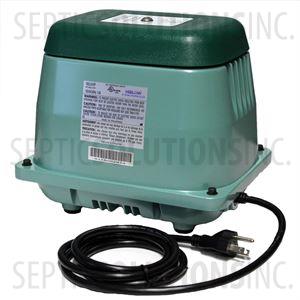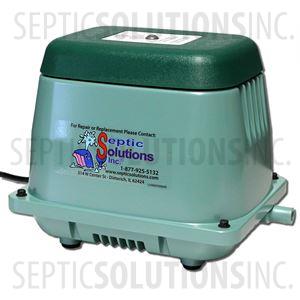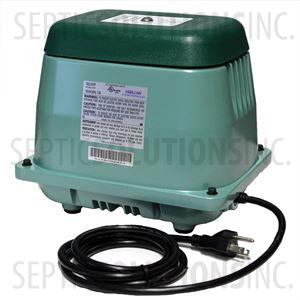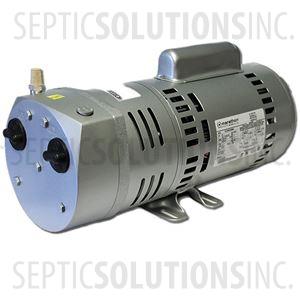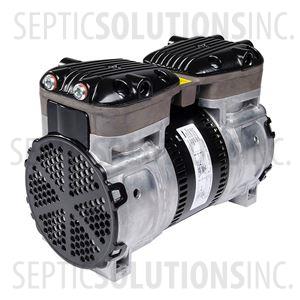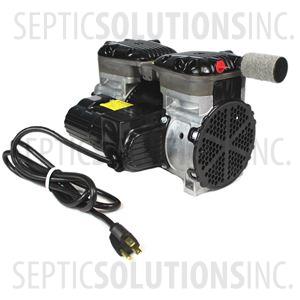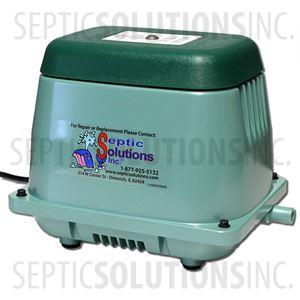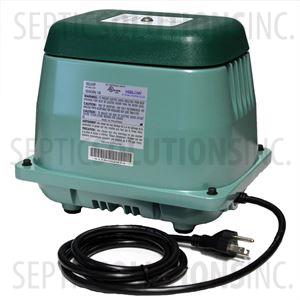Pond Aeration Pumps - Which Pump Is Best for Your Pond?
Bottom diffused pond aeration typically uses an air pump that sits on the shore line and pumps air through weighted tubing down to a diffuser that sits on the bottom of the pond. This is widely regarded as the best method for aerating a pond or lake. In this article we will discuss the typical air pumps used in bottom diffused pond and lake aeration.
Hiblow Linear Diaphragm Pumps – Best Option for Ponds Less Than 10 ft Deep
Linear diaphragm pumps are extremely quiet and energy efficient which makes them a great option for pond aeration. This type of air pump uses electromagnets to drive a magnetic
rod block between two rubber diaphragms to produce air flow. Linear diaphragm pumps usually produce up to 8 cfm of air flow and can operate at up to 4.5 psi. Diaphragm rebuild kits are available to repair the pump when the wear parts fail in the field.
Linear diaphragm pumps can vary pretty significantly in quality. The better-quality pumps such as the Hiblow brand will normally last 3-5 years between diaphragm replacements and 10-15 years overall in continuous operation.
With all things considered, the Hiblow HP series linear diaphragm pumps are the best option for aerating ponds up to 3 acres in size that are less than 10 feet deep.
Pros:
- Extremely Quiet (less than 50 dB)
- Extremely Energy Efficient (most operate at 1-2 amps)
- Repair Parts Available
Cons:
- Low maximum operating pressures (cannot operate at depths greater than 10 ft)
Gast Rotary Vane Pumps – Best Option for Ponds 10-18 ft Deep
 Rotary vane pumps consist of a rotor mounted inside a cylindrical housing with blades that move in and out due to centrifugal force following the internal surface of the housing create positive displacement to produce air flow. Rotary vane pumps can produce up to 10 cfm and can operate at up to 10 psi continuously. Replacement vane kits are available to repair the pump when these wear parts fail in the field.
Rotary vane pumps consist of a rotor mounted inside a cylindrical housing with blades that move in and out due to centrifugal force following the internal surface of the housing create positive displacement to produce air flow. Rotary vane pumps can produce up to 10 cfm and can operate at up to 10 psi continuously. Replacement vane kits are available to repair the pump when these wear parts fail in the field.
The Gast rotary vane pumps usually last 4-6 years before needing a replacement vane kit and 12-15 years overall in continuous operation.
Pros:
- Long life in comparison to Rocking Piston and Linear Diaphragm
- Higher Airflow Volumes Available
- Repair Parts Available
Cons:
- Noisy Compared to Hiblow Linear Diaphragm pumps (approximately 70 dB)
- Lower Maximum Operating Pressure Compared to Rocking Piston Compressors (10 psi vs 30 psi)
- High Energy Consumption Compared to Hiblow Linear
Gast Rocking Piston Pumps – Best Option for Ponds Over 18 ft Deep
 Rocking piston pumps operate a flexible cup in a cylinder mounted on top of connecting rods in a reciprocating motion and as the cup maintains a seal against the cylinder walls it produces air flow and pressure. These pumps can produce up to 5 cfm and can operate at up to 30 psi continuously. Replacement kits are available to repair the pump when the cups and cylinders wear out.
Rocking piston pumps operate a flexible cup in a cylinder mounted on top of connecting rods in a reciprocating motion and as the cup maintains a seal against the cylinder walls it produces air flow and pressure. These pumps can produce up to 5 cfm and can operate at up to 30 psi continuously. Replacement kits are available to repair the pump when the cups and cylinders wear out.
The Gast rocking piston pumps usually last 3-5 years before needing a rebuild kit and 8-12 years overall in continuous operation.
Pros:
- High Maximum Operating Pressure (up to 30 psi)
- Repair Parts Available
Cons:
- No High Volume Option (only up to 5 cfm)
- High Energy Consumption Compared to Hiblow Linear Diaphragm Pumps
- Noisy Compared to Hiblow Linear Diaphragm Pumps (approximately 65 dB)


